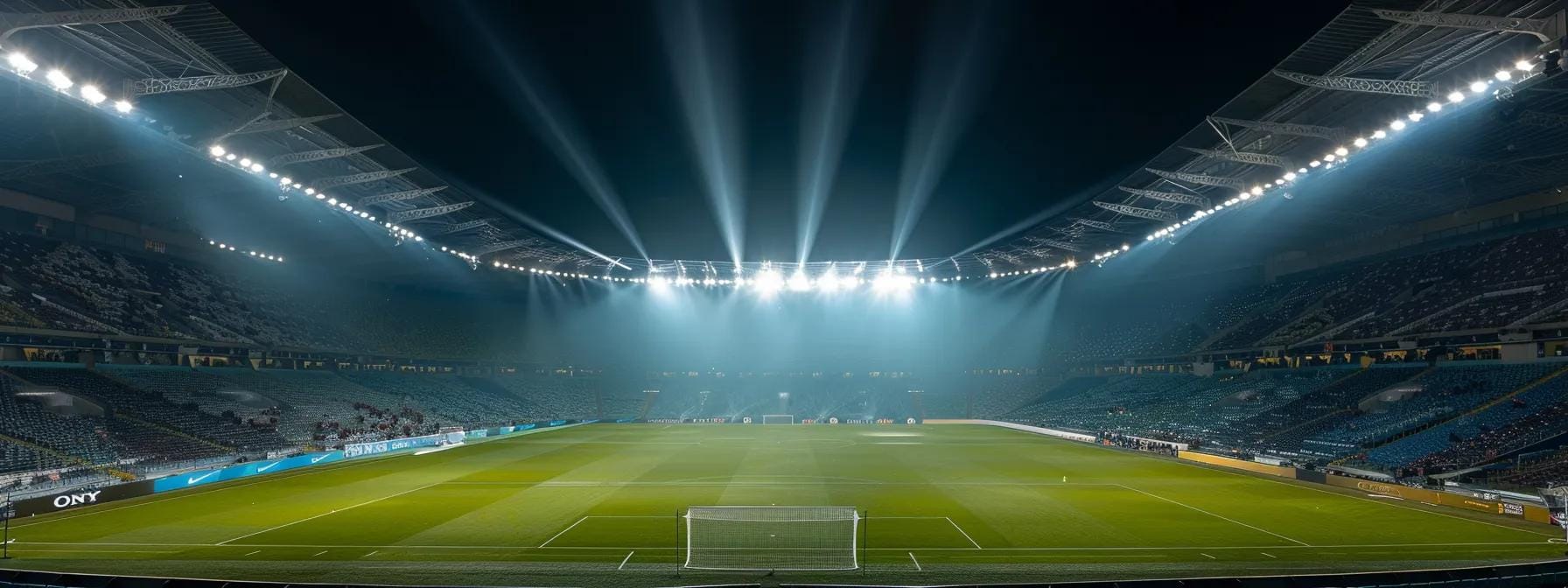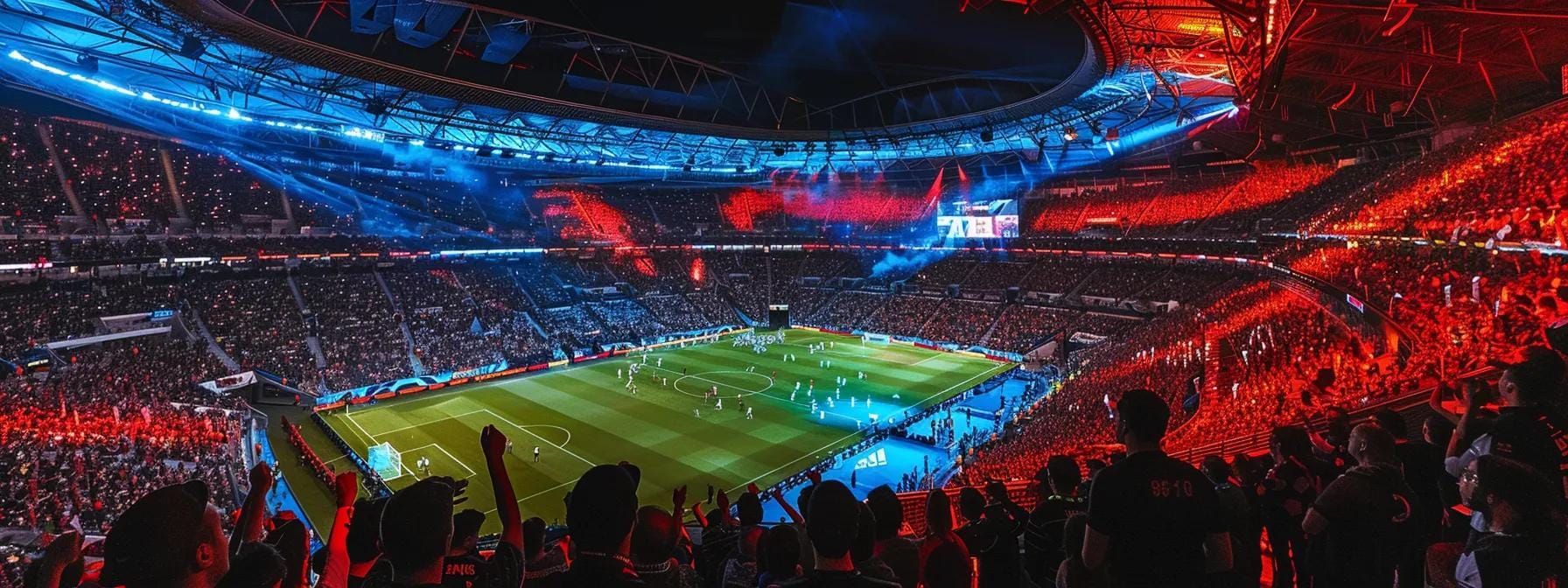FIFA Club World Cup Attendance Issues and Ronaldo’s Absence: Impact and Analysis
Introduction
The FIFA Club World Cup has long been a prestigious tournament featuring top football clubs from around the globe. However, recent editions have seen a notable decline in in-person attendance, prompting analysts to examine contributing factors. This article analyzes key reasons for low attendance—such as scheduling conflicts, inconvenient locations, suboptimal marketing, and the absence of marquee players like Cristiano Ronaldo—and explores the effects on tournament popularity and future trends. Stakeholders, including event organizers, club owners, broadcasters, and investors, must understand these dynamics to ensure that global club competitions remain financially viable and well-supported in an increasingly digital era.
The following sections detail scheduling impacts, location challenges, marketing and promotion deficits, and the effects of star player absences. We provide actionable insights on overcoming attendance barriers and leveraging digital platforms to enhance fan connection, both in stadiums and online.
What Are the Main Reasons for Low Attendance at the FIFA Club World Cup?

Low attendance is linked to several factors. First, tournament scheduling often conflicts with personal and professional commitments, reducing the likelihood of in-person attendance. Additionally, host cities may lack a strong local football culture or the necessary infrastructure, which hinders access for both local and international fans. Finally, fragmented or underfunded marketing efforts fail to generate sufficient excitement and awareness about the event.
How Does Scheduling Affect FIFA Club World Cup Attendance?
Scheduling directly influences tournament accessibility. Matches held on weekdays or during busy periods result in lower turnout due to work, school, or conflicting sports events. Research shows that tournaments scheduled for weekends or holidays yield higher crowds. Unpredictable match timings and last-minute changes—often due to weather or broadcast issues—further discourage fans who prefer to plan ahead, leading to lower overall attendance.
What Role Does Location Play in Fan Turnout?
Location is critical in determining attendance. Many host cities are not traditional football hubs and may lack an established fan base. Limited infrastructure, poor transportation, and fewer accommodation options can be major obstacles. Furthermore, if a host city does not resonate with global football enthusiasts, attendance diminishes. Security, political stability, and economic conditions also influence the willingness of fans to travel, reducing overall turnout.
How Do Marketing and Promotion Influence Attendance Numbers?
Effective marketing is essential for driving attendance. Campaigns that leverage social media, traditional advertising, and celebrity endorsements can create buzz. However, when marketing is fragmented or underfunded, it fails to build the sustained excitement needed for high attendance. Successful tournaments have used targeted digital marketing, virtual fan zones, and behind-the-scenes content to boost both stadium and online engagement. In this way, marketing is not just about ticket sales but also about delivering an engaging overall fan experience.
How Has Ronaldo’s Absence Impacted the FIFA Club World Cup?
Cristiano Ronaldo’s absence has significantly impacted the tournament’s appeal. As a global icon, his presence generates extensive media coverage, high ticket sales, elevated TV ratings, and increased sponsorship revenue. Without him, the tournament loses a major draw, reducing overall excitement and fan turnout. This absence forces organizers to rely on the appeal of less prominent players and different narrative angles, which may not capture the same level of interest.
Why Is Ronaldo’s Presence Important for the Tournament’s Popularity?
Ronaldo’s reputation as a prolific goal scorer and charismatic leader transforms matches into must-watch events. His involvement guarantees extensive media attention and enhances merchandise sales and social media engagement. When he plays, the tournament benefits from increased visibility and fan interest. Without his star power, the match atmosphere suffers, and fans may be less motivated to attend or watch games, directly impacting the tournament’s popularity and financial prospects.
What Are the Effects of Key Player Absences on Fan Engagement?
When star players are missing, fan engagement declines noticeably. Fans experience diminished emotional excitement and anticipation when watching their idols, which results in fewer ticket purchases and lower TV viewership. Matches without marquee players often exhibit a 20–30% drop in attendance, as the absence of recognizable talent reduces media interest and dampens the overall stadium atmosphere. This ripple effect can also impact broadcast revenue and sponsorship deals.
How Do Teams and Organizers Respond to Star Player Withdrawals?
To counteract the impact of star player withdrawals, teams and organizers adopt various strategies. These include launching marketing campaigns that highlight emerging talents or classic match moments, offering exclusive pre-match events, and creating interactive fan experiences. Adjustments in scheduling and ticket pricing, such as promotional bundles, are also used to encourage attendance. Additionally, collaborations with sponsors and broadcasters help shift the focus from individual stars to team spirit and competitive narratives, thus attempting to sustain overall fan interest.
What Are the Attendance Trends and Predictions for Future FIFA Club World Cups?

Recent tournaments have shown variability in attendance figures, with several editions experiencing lower crowds despite competitive play. Factors such as scheduling misalignments, challenging host locations, and diminishing star power have contributed to this decline. However, the evolution of digital engagement offers a promising path forward. Future editions are expected to embrace innovative technologies and improved fan experiences to address these challenges.
How Have Attendance Figures Changed Over Recent Tournaments?
Historically, tournaments featuring top clubs and star players drew substantial crowds. Recent data, however, indicates a gradual decline—with some venues reporting up to a 25% drop compared to peak years. Contributing factors include suboptimal scheduling, logistical challenges in non-traditional host cities, and growing reliance on digital platforms, which partly offset physical attendance by drawing large online audiences. The shift from in-person viewing to digital consumption remains a critical issue for maintaining a vibrant live atmosphere.
What Factors Will Influence Future Attendance at the FIFA Club World Cup?
Future attendance will depend on various interrelated factors. Enhanced digital experiences and interactive mobile platforms can offer new ways for fans to engage, even if they cannot attend physically. Improved scheduling that considers global time zones and workweek patterns is likely to boost turnout. Moreover, host cities with robust transportation and hospitality infrastructure, coupled with community engagement initiatives, will attract more fans. Sponsorships and flexible ticketing models, such as family packages, can also support higher attendance. Economic conditions and consumer confidence, along with strategic broadcast deals that integrate in-stadium and digital coverage, will further shape future trends.
Can Innovations Improve Fan Turnout in Upcoming Editions?
Technological innovations could reverse declining attendance trends. Augmented reality (AR) and virtual reality (VR) can transform the matchday experience, allowing fans to virtually enjoy the stadium atmosphere even from home. Digital ticketing systems with dynamic pricing offer more accessible options for a wider audience. Enhanced mobile applications that deliver real-time statistics, interactive polls, and exclusive interviews create a more immersive fan experience. Social media integration, promoting unified global fan communities, further boosts turnout by making the event more engaging and interactive.
Which Other Player Absences Have Affected the FIFA Club World Cup?
Beyond Ronaldo, other key player absences have also affected the tournament’s draw. These withdrawals, whether due to injuries, club commitments, or personal decisions, influence both team performance and fan enthusiasm. The absence of well-known players often leads to a diminished fan experience, as supporters miss the chance to see standout individual performances.
What Are Common Reasons for Player Withdrawals From the Tournament?
Common reasons include injuries sustained during extensive league play, club commitments taking precedence over international tournaments, and personal or contractual disputes. Players may also withdraw as part of fitness management strategies to avoid burnout. Short-notice withdrawals create unpredictability, further reducing fan enthusiasm and impacting the overall attractiveness of the tournament.
How Do Player Absences Affect Team Performance and Fan Interest?
Missing key players generally leads to poorer team performance, which correlates with reduced fan interest. Tactical adjustments needed to compensate for absent stars can disrupt the team’s rhythm, resulting in less competitive play. This decline in performance discourages fans, cutting ticket sales and lowering broadcast viewership. In turn, reduced fan enthusiasm affects advertising revenues and overall marketability.
How Does FIFA Address Attendance and Player Absence Challenges?

FIFA has implemented multiple measures to tackle low attendance and star player absences. These steps include revised scheduling practices, targeted marketing campaigns, and enhanced digital engagement strategies aimed at maintaining robust fan interaction regardless of physical attendance levels.
What Measures Has FIFA Implemented to Boost Attendance?
FIFA has refined match schedules to avoid conflicts with other major events and adjusted kick-off times to suit both local and international audiences. Investment in state-of-the-art stadium facilities and enhanced fan amenities has improved the live match experience. Special promotional offers, such as discounted ticket packages and fan zone experiences, have been introduced. Additionally, FIFA leverages digital platforms to provide live updates and virtual reality experiences, ensuring continuous engagement even if stadium turnout falls.
Partnerships with global sponsors help create a tournament narrative that emphasizes community and inclusivity, making fans who cannot attend in person feel involved in the event’s excitement.
How Does FIFA Manage Star Player Participation and Tournament Appeal?
To mitigate the impact of star player withdrawals, FIFA collaborates with clubs, leagues, and agents to secure player participation. While player availability is influenced by club obligations and fitness concerns, FIFA works to negotiate favorable release windows. When withdrawals do occur, the focus shifts to promoting emerging talent and team narratives. Enhanced digital storytelling through video content and interviews replaces individual star appeal with a celebration of team unity, ensuring the tournament remains attractive to fans.
What Role Do Broadcast and Digital Platforms Play in Fan Engagement?
Broadcast and digital platforms are central to FIFA’s strategy for fan engagement. High-definition broadcasts with interactive features such as multiple viewing angles and live statistics allow fans to experience matches from anywhere. Social media, virtual fan zones, and dedicated tournament apps foster real-time interaction and community participation. These digital innovations help bridge the gap when physical attendance diminishes, ensuring that the tournament maintains a robust global presence.
Frequently Asked Questions
Q: How significant is scheduling in affecting FIFA Club World Cup attendance?
A: Scheduling plays a pivotal role; matches held during workdays or conflicting with other events see lower turnout. Optimizing timings for various global audiences can improve in-stadium attendance and digital viewership.
Q: In what ways does location influence the tournament’s attendance?
A: Location impacts both accessibility and the strength of the local fan base. Cities with strong football cultures and excellent infrastructure attract larger crowds, while remote or less traditional locations face challenges in drawing fans.
Q: What impact does a star player’s absence, such as Ronaldo’s, have on fan interest?
A: The absence of a marquee player like Ronaldo reduces media appeal and match excitement. Historically, his participation has boosted attendance significantly, and without him, overall fan engagement declines.
Q: What innovative measures is FIFA implementing to boost overall fan engagement?
A: FIFA is enhancing scheduling, upgrading stadium facilities, and using digital engagement platforms and interactive mobile apps to improve both physical and online fan experiences.
Q: How does FIFA manage the challenges of player withdrawals beyond marketing tactics?
A: FIFA works with clubs and associations to minimize scheduling conflicts and negotiate player release windows while also emphasizing emerging talent and team performance to sustain fan interest.
Q: What role do digital broadcasts play in complementing traditional attendance?
A: Digital broadcasts allow global audiences to experience the tournament live with multiple viewing options and real-time statistics, thereby bridging the gap when physical attendance is low.
Q: Can future innovations in technology help reverse the current attendance decline?
A: Yes, advancements such as augmented reality (AR), virtual reality (VR), and enhanced interactivity are expected to create more immersive experiences that attract a wider audience, regardless of physical attendance.
Final Thoughts
FIFA Club World Cup attendance has been challenged by scheduling conflicts, less-than-ideal locations, and the absence of marquee superstars like Ronaldo. These factors have led to a decline in live spectator turnout, even as digital viewership grows. Addressing these challenges requires both short-term adjustments, such as improved scheduling and marketing, and long-term strategies that integrate advanced digital technologies. A hybrid approach—combining traditional in-stadium experiences with innovative digital enhancements—offers a promising path to revitalize the tournament’s global appeal.









































































































